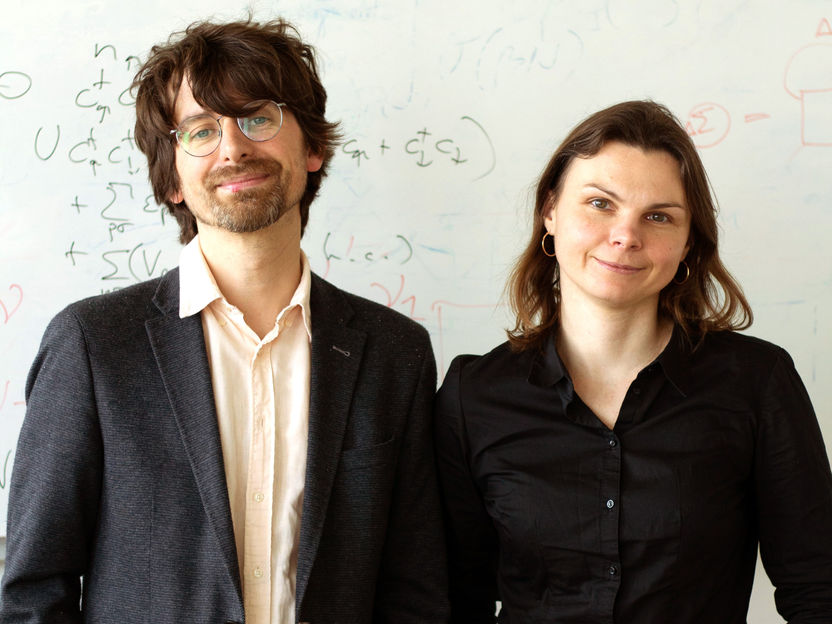Scale separation: breaking down unsolvable problems into solvable ones
The computer will figure out what to ignore
Exact solutions are often impossible in materials physics. In an international research cooperation involving TU Wien and Saitama University in Japan a technique has now been developed to make unsolvable quantum calculations solvable on certain scales.

Markus Wallerberger and Anna Kauch
TU Wien
In physics, one often has to deal with different scales that can be described separately from one another: For the earth's orbit around the sun, it makes absolutely no difference whether an elephant in the zoo walks to the left or to the right. And the movement of the elephant can be described without having to know anything about the properties of the electrons in its ear. The world can be divided into different scales.
In materials research, too, it is important to describe the behavior of particles on the appropriate scales. However, you first have to find out which scales are the decisive ones - a difficult task for which there was previously no clear solution strategy. One could only hope to guess the solution with a lot of experience. However, a mathematical method has now been found by an international research cooperation with the participation of the TU Wien and Saitama University in Japan to calculate the appropriate scales - an important step in the search for better materials for different areas of application, from microchips to photovoltaics. The method has now been published in the journal PRX.
The exciting problems are the difficult ones
"In materials physics, electrons often cannot be viewed separately from one another," says Anna Kauch, who heads an FWF research project on this topic. "Particularly exciting phenomena such as magnetism or superconductivity can only be understood if many particles and their complex interactions are described together." However, this is usually not possible with complete accuracy: If many particles are involved, then the formulas of quantum theory quickly become so big and so complex that even the best supercomputers in the world cannot solve them exactly – not even the state of the particles can then be written down exactly, because that would require more storage space than we will ever have available.
One must therefore look for certain approximations. These approximations often consist in being able to disregard certain size scales in certain cases. "Sometimes you can find quite simple physical arguments for it,"
says Markus Wallerberger, one of the authors of the paper. "A typical example of this are electrons and atomic nuclei in a crystal: the electrons are very light and move quickly. The atoms are much heavier, so on the time scale used to describe the motion of the electrons, the atoms can be considered rigid and immobile.”
In this case, we have splitted a complicated problem into two much simpler problems: we can now think about the fast movement of the electrons on the one hand and the much slower movement of the atoms on the other - and think about how the two are related.
The computer will figure out what to ignore
But what do you do if you cannot see such an intuitive solution? So far, one could only guess in this case. But now it has been possible to develop a mathematical recipe for this situation: "In our paper, we show how to break down the complete description of such a system into different scales," explains Hiroshi Shinaoka, professor at Saitama University in Japan and leader of the study. “It then automatically shows which scales are important and which ones can be left out. At the same time, the calculation method also tells us what the coupling between the different scales looks like and how we can then use it for further calculations.”
Original publication
Other news from the department science

Get the chemical industry in your inbox
By submitting this form you agree that LUMITOS AG will send you the newsletter(s) selected above by email. Your data will not be passed on to third parties. Your data will be stored and processed in accordance with our data protection regulations. LUMITOS may contact you by email for the purpose of advertising or market and opinion surveys. You can revoke your consent at any time without giving reasons to LUMITOS AG, Ernst-Augustin-Str. 2, 12489 Berlin, Germany or by e-mail at revoke@lumitos.com with effect for the future. In addition, each email contains a link to unsubscribe from the corresponding newsletter.
Most read news
More news from our other portals
Last viewed contents
Lead(II)_nitrate_(data_page)





























































